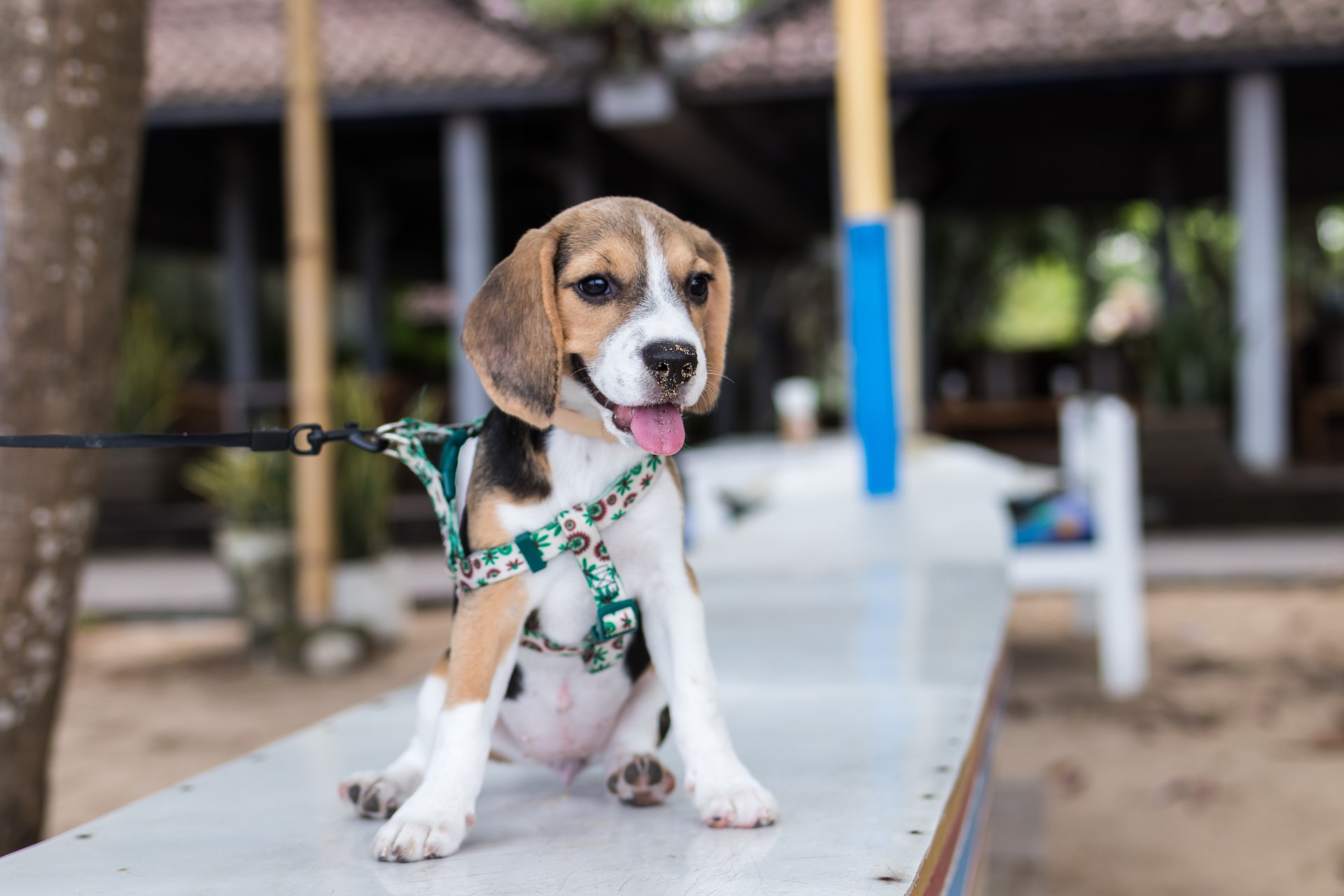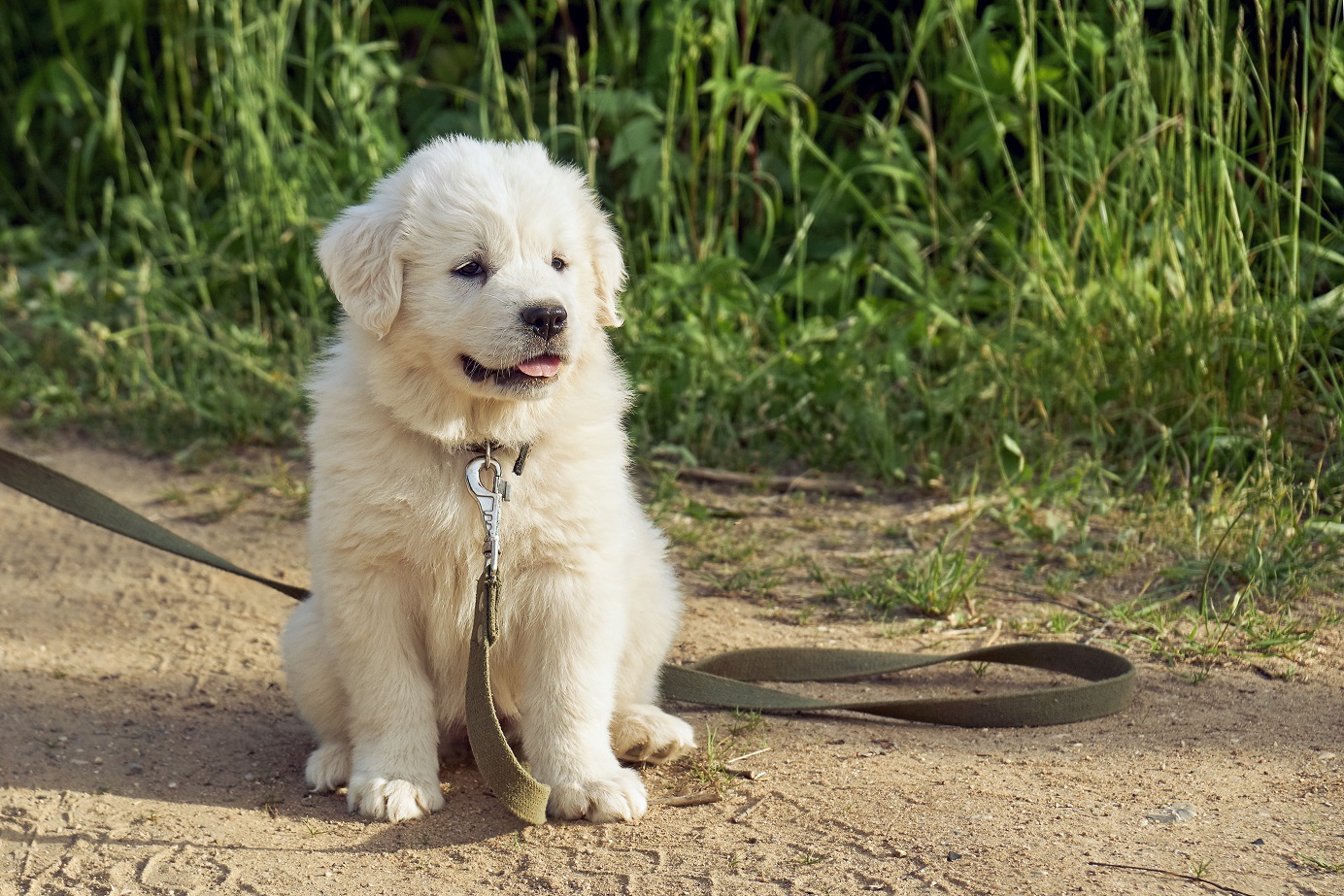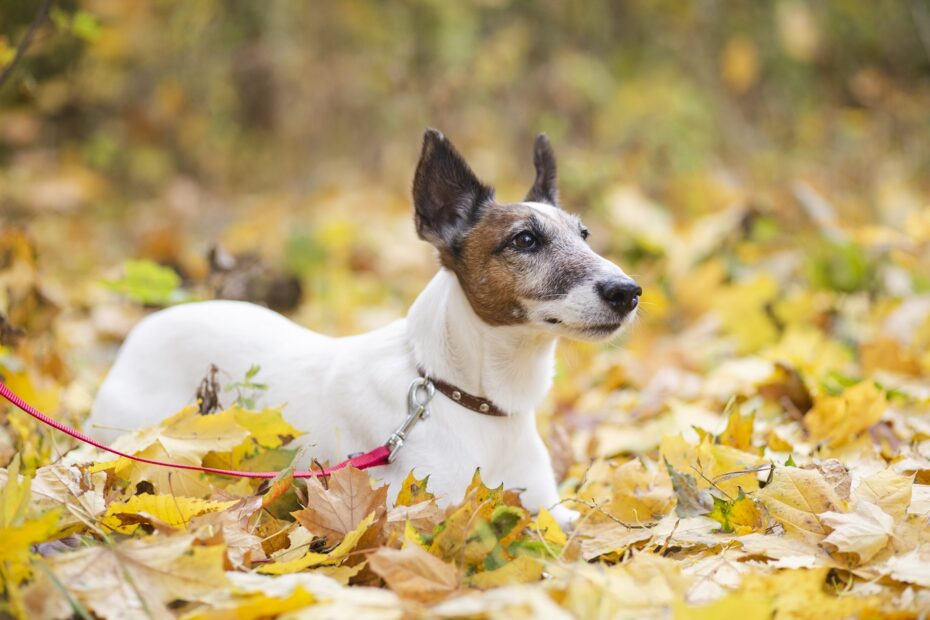While most pups jump at the chance to head outside and explore. If your puppy refuses to walk on the leash, it’s a different story altogether.
Now, leash refuses is a lot more common in puppies than you think. And while it can sometimes be a nightmare to coax them out for a leisurely stroll, it’s by no means impossible.
The trick to doing this, however, is to…
- Figure out why they hate the leash
- Put together an effective plan of action in place to address it
Easier said than done, right?… I know. But it’s ultimately our job as owners to develop our pups from the boundless balls of energy they are now… Into the well-behaved, confident dogs we so desperately want them to be.
Although it can seem like a daunting task. With the right guidance, a little bit of patience, and, more importantly… consistency, you can change your pup’s attitude towards the leash for the better.
Now, before we get into the do’s and don’t of leash training. I think it’s first important to highlight that teaching your puppy to be calm and in control of their emotions is the very first step to dealing with your pups’ leash refusal.
See, a puppy who can instinctively relax what the occasion calls for it (in this instance, walking calmly on the leash). They’re much more likely to become highly responsive to the point where they want to listen and obey.
Better still, they tend to quickly overcome the usual triggers that previously held them back.
So to reap the benefits of a calm, responsive pup, I’d highly recommend you start by taking a look at the 5 emotional control exercises from Dan Abdelnoor (aka Doggy Dan) over at The Online Dog Trainer. (see video below)
In short, if you watch the video, learn the exercises, but more importantly… use them on your puppy consistently. You should start to notice a big difference in your puppy’s willingness to walk on the leash.
So before moving on, take a few minutes to have a look: 5 Emotional Control Exercise That Will Make Your Puppy Highly Responsive & Ready To Walk On The Leash…
(video will open in a new window)
What To Do If Your Puppy Refuses To Walk On The Leash
Like most puppy problems, there can be plenty of reasons your puppy turns a blind eye to the leash.
Again, the first step is determining what exactly is causing it so you can deal with it in the most logical way possible.
So take some time to read through some of the more common causes below to see if anything catches your eye…
Unfamiliarity
One of the more obvious reasons for leash refusal is simply that it’s new and unfamiliar territory to your pup.
Like most things in like, trying new things can be scary. They take us out of our comfort zone and into unchartered territory when we’re unsure of the outcome.
This is why puppies, dogs, and yes, even humans tend to shy away from anything and everything different from what they feel is normal.
The problem, however, is actually figuring out if it’s the leash they hate more or the walk itself.
An easy way to determine this is to simply attach the leash to your pup indoors and then let them have free roam of the backyard for 5-10 minutes.
If your puppy is happy to run around endlessly with the leash attached, then you’ll know the leash itself isn’t causing the issue.
So you’ll then need to start considering other measures to get them used to heading out further afield.
Lack of freedom
An often overlooked issue is the lack of freedom the leash presents to an unsuspecting puppy.
This can be more of you’ve recently brought home a new puppy you haven’t yet introduced the leash.
See, up until now, your puppy has had no limits on where they can and can’t go. They’ve been able to do as they please without a second thought.
But a leash restricts this freedom. Because now, they’re bound by a set a new set of rules that tells them it’s not ok to wander off and explore as they please.
As previously discussed, you can usually overcome this issue by building familiarity with the leash.
However, if your puppy hates the leash with a passion and runs a mile every time it comes near, you’ve potentially got bigger problems.
This is where those 5 emotional control exercises I talked about work really well, especially if your pup just flat out refuses to be leashed.
Because by bringing your puppy’s emotions under control and dialing things down a little, they’ll become much more receptive to something that can usually set them off.
Related Post: 7 Reasons Your Puppy Chews The Leash And What To Do About It

They’re Wearing The Wrong Leash/Collar
You wouldn’t wear a t-shirt that was two sizes too small. Nor would you wear one three sizes too big and drapes off you like a dress.
But this is something I see all too often when it comes to picking out the right leash and collar for a pup.
Often owners will just go for the first thing that’s sitting on the shelf at their local pet store and just hope that their pup will get used to it in time.
Just to be clear… don’t do this. You’ll save yourself weeks of hassle and frustration if you take 5 minutes to educate yourself on what’s best for your pup.
So there are two important things to consider here…
- Size
- Material
As a rule of thumb, you should always aim to get a collar with a circumference that has around 2-3 inches of play compared to your pup’s neck.
So, for instance, if a dog’s neck were to be, let’s say, 20 inches. You’d want to get an 18-22 inch collar for a comfortable fit.
With regards to material, nylon and leather are your best two options.
Nylon is typically preferred for smaller dog breeds because it’s both cost-effective and lightweight. Nylon’s also relatively moisture-resistant, so it won’t weigh a small pup down if it happens to get wet.
On the flip side, a leather collar is more durable and won’t break as easily.
The downside, however, is that they are generally more expensive, and they can often cause chafing if they get too worn and brittle.
To summarise, both nylon and leather provide a great deal of comfort and support, and you’d be smart to go with either one. But whatever you choose, make sure it’s in the best interest of your pup.
Negative Associations With The Leash
Negative associations are constantly being developed from previous experiences throughout our lives and have a tendency to sneak up on us when we least expect it.
Basically, what this means is that if you’ve ever had a bad experience with a particular person, place, or anything else for that matter. It often gets deep-rooted in our psyche and then presents itself when something similar occurs.
For instance, if your pup has ever had the leash forced upon them or been dragged on the leash by a previous bad owner. Then they will have inevitably developed a number of negative associations from those past experiences.
And it doesn’t matter how good your intentions are when it comes to taking them out for a daily stroll. They’re always going to go to that place in their head that says… Leash = Bad
The solution? …Replace the negative associations with ‘new’ positive ones.
The idea here is to make your pup feel good whenever they’re wearing the leash. And the easiest way to get this done is with lots of praise, attention, and of course… treats!
The great thing about this method is you can start slowly and gradually build up their confidence in small stages.
Start by just sitting on your doorstep (leash in hand) and grab your puppy’s attention by holding out a treat.
If they go for it, attach the leash while they’re enjoying their tasty snack and give them lots of praise and attention when they do.
If they flat out refuse the leash, quickly run through the 5 emotional control exercises to dial down your pup’s anxiety and reattempt to attach the leash.
It can take several attempts to get this right, but if you keep at it, your pup will eventually start to let down their guard.
When this happens (and with your pup leashed), toss a treat 5-10 feet in front of you and see if they go for it. Always remembering to give positive praise and attention whenever they do.
Again, the aim here is to slowly replace any negative association they previously had with the leash with positive ones. And as you do, you’ll soon be able to start testing your pup’s limits beyond the confines of your front yard and take it to the streets.

They Don’t Like Leaving Home
Although it may seem difficult to understand, some puppies that refuse to walk on the leash don’t actually have a problem with the leash itself.
It’s more the fact that they’re either afraid to leave the house (due to fear, anxiety, lack of socialization, etc.)…
…Or, they’re very territorial about defending their home and are hell-bent on guarding it with their very life.
A great way to get an idea if this is the case is to do things a little differently walk them towards the house instead of away from it.
You might find that even though they refuse to budge when it’s time to set off on an adventurous walk, they’ll actually do the opposite when it’s time to head home.
You can test this out by trying something called the walk reversal method.
Basically, what you’ll do is get your pup on the leash (preferably while they’re still indoors), and then either carry (or drive) them a short distance from your house.
If you find that your pup bounds along the sidewalk with enthusiasm when they know it’s time to head home…
…But becomes an immovable force of nature when it’s time to head out, then there’s your answer.
Lack Of socialization
While some pups will jump at the chance to get among other dogs and enjoy an endless fiesta of fun, others will always be a little reluctant to get in on the action.
And despite this being something your need to address sooner rather than later. It’s also something that can make them hesitant to strap on the leash and explore the big wide world.
The fix? …simply socialize them more.
Puppy socialization classes or even inviting a friend over with a similarly aged pup are a great starting point for addressing the issue at hand.
And while they might not take to it like a duck to water, you’d be surprised how regular socialization over a few weeks can quickly make them forget their fear of the leash.
Related Post: How To Socialize An Aggressive Dog – A Step By Step Guide

Wrapping Things Up
It can be a little worrying, especially in the early days of owning a pup when they don’t seem to adjust to the leash.
And although it can be a little frustrating at first (especially when all you want is for them to enjoy the great outdoors), it’s a behavior that they can overcome given enough time.
Just remember that nothing happens overnight, and you shouldn’t expect it to either.
But if you follow the advice above, use the 5 emotional control exercises, and more importantly, be consistent. You’ll have a well-adjusted pup on your hands in that loves the leash in no time.

